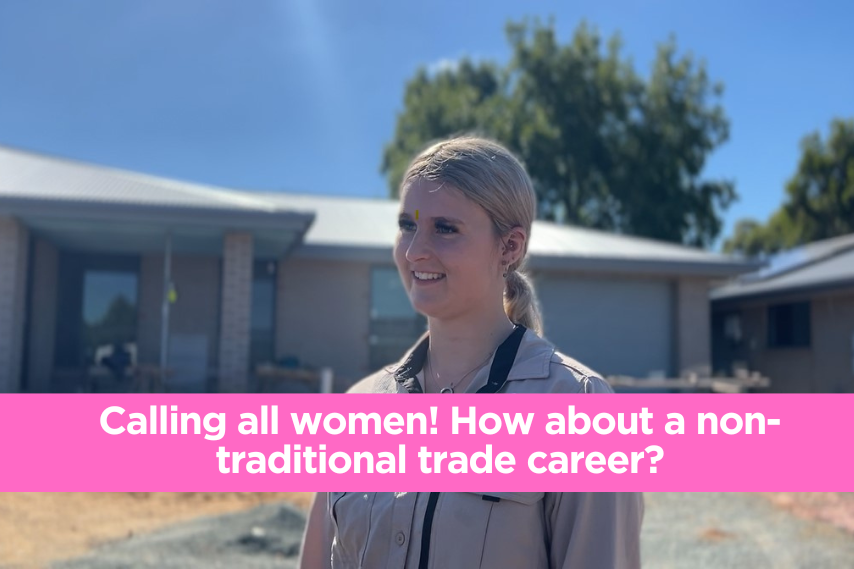
Have you ever thought about a career in a trade that’s traditionally male-dominated? Industries like construction, engineering and automotive have long been seen as “men’s work,” but that’s changing, and now is the perfect time to explore these opportunities.
Non-traditional trades are those where women make up less than 25% of the workforce. These roles are essential to building the infrastructure we all rely on, from schools and hospitals to transport networks. And here’s the exciting part: women who work in these trades often report higher job satisfaction than those in other industries.
So why should you consider a trade career? Here are four great reasons:
1. Strong Demand for Skilled Trades
Australia is experiencing a significant skills shortage in trade industries. This means plenty of job opportunities now and into the future. If you’re looking for a career with stability and growth, trades are a smart choice.
2. More Women Are Joining the Trades
While women currently make up a small percentage of qualified tradespeople, the numbers are rising. At Skillset, we’ve seen a steady increase in women taking up apprenticeships in non-traditional trades, and we’re committed to supporting this trend.
3. Trades Offer Great Earning Potential
Trade careers can provide excellent financial security. Many trades offer salaries that are higher than roles traditionally dominated by women. Choosing a trade can mean earning well while building a career you love.
4. Support Is Growing for Women in Trades
Industry bodies and training organisations are working hard to break down barriers and create supportive environments for women. Initiatives include:
- Campaigns showcasing successful women in trades.
- Work experience programs to “try before you commit.”
- Mentoring and networking opportunities.
- Tailored career planning and induction programs.
At Skillset, we’re proud to play our part by helping women access apprenticeships and traineeships in non-traditional trades.
Ready to Explore Your Options?
If you’re curious about a trade career, now is the time to take the first step. Whether you want to try a work placement, start an apprenticeship or learn more about available pathways, Skillset can help.
Contact us today to find out how we can support your journey into a rewarding trade career.
You may also like

How to manage your nerves in a job interview
Let’s face it, job interviews can be nerve-racking. […]

Getting Career Ready for 2026
If you’re thinking about putting your job search […]
 Skillset would like to acknowledge and pay respect to the traditional custodians of the lands on which we work.
Skillset would like to acknowledge and pay respect to the traditional custodians of the lands on which we work.We are honoured to be on the ancestral lands of those whose cultures are among the oldest living cultures in human history. We pay respect to the Elders, past, present and to the younger generation of the community who will be the future leaders in years to come.

